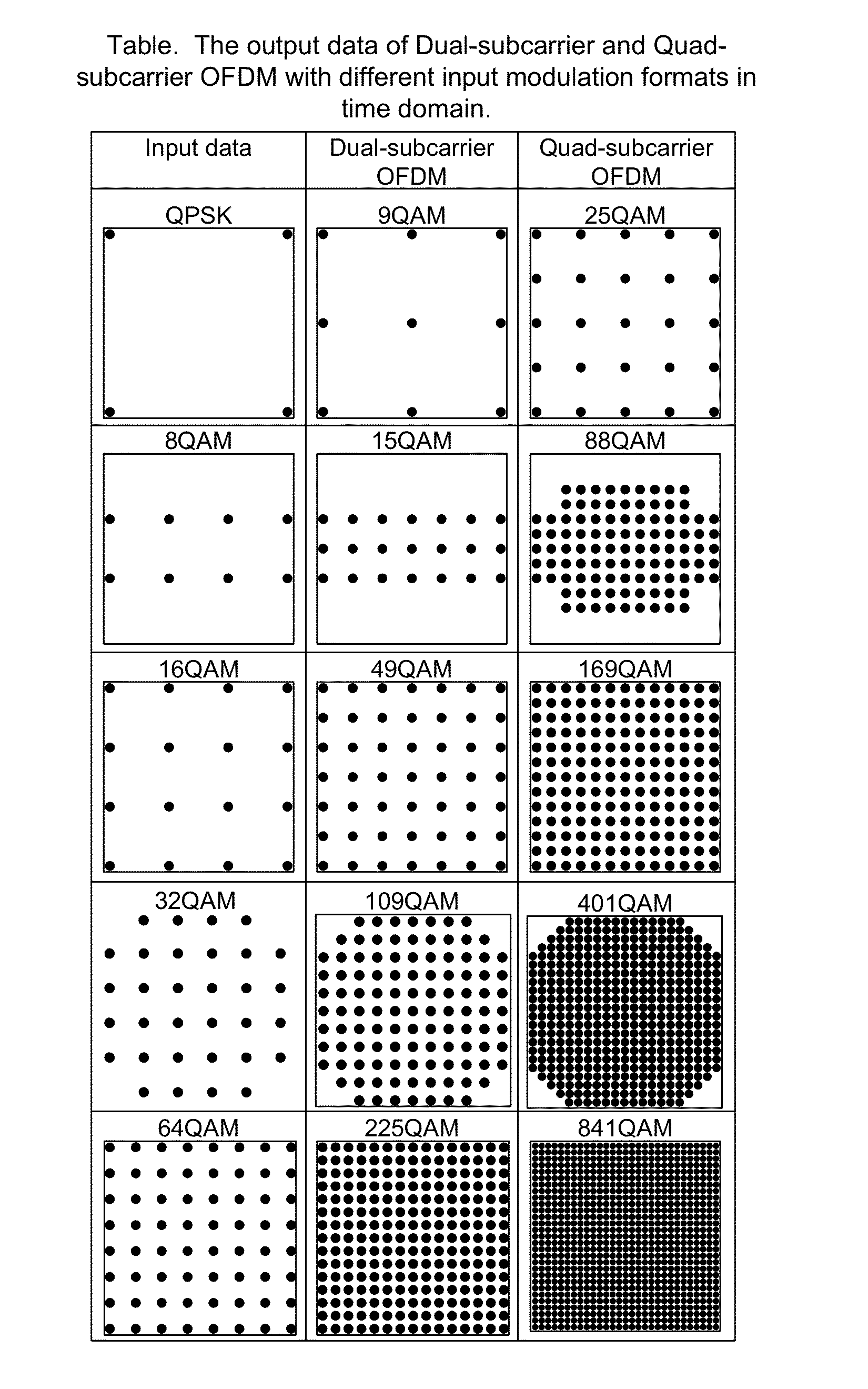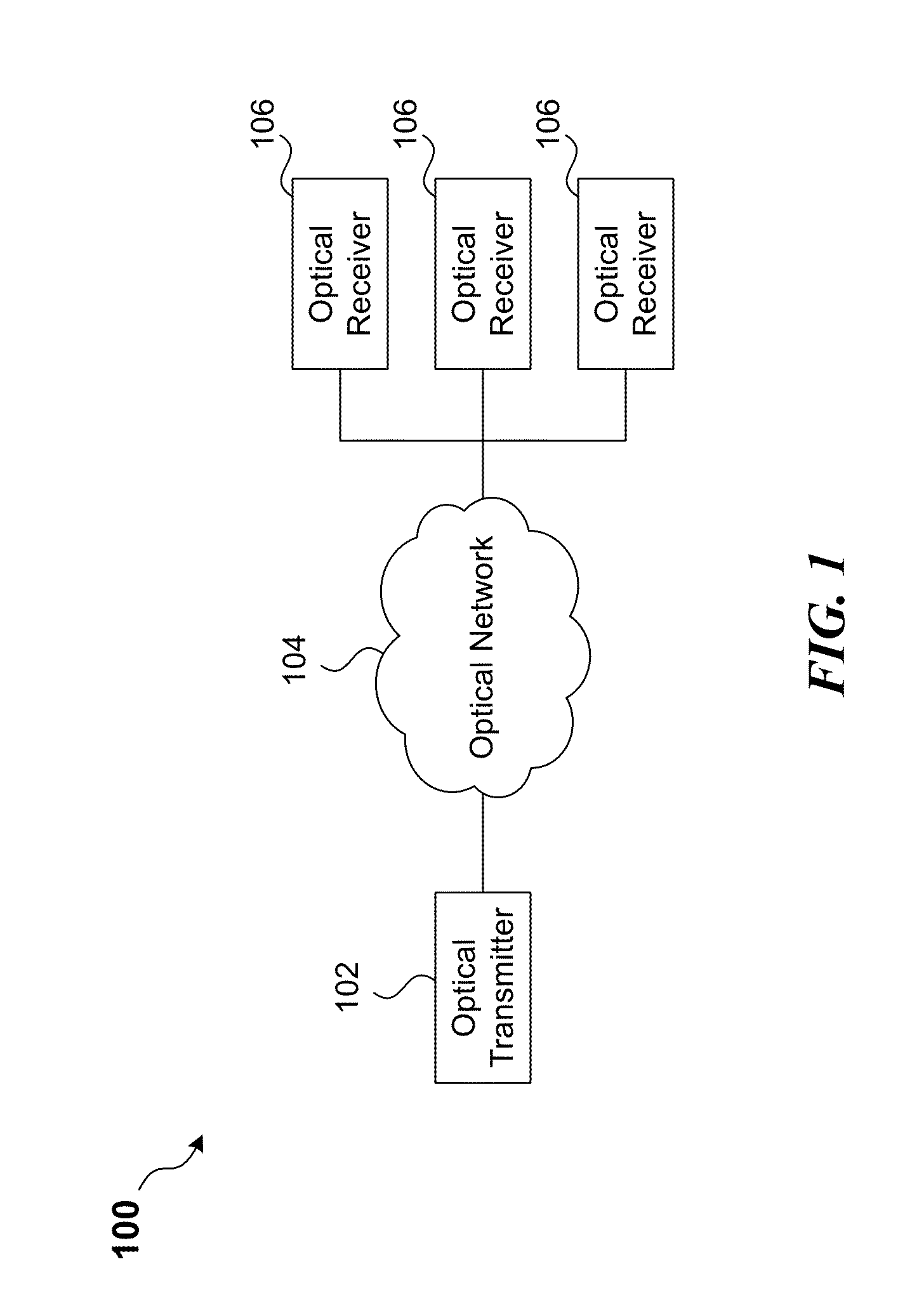Blind equalization of dual subcarrier OFDM signals
a dual-carrier, signal technology, applied in the field of digital communication and receiver signal processing, can solve the problems of difficult to meet the needs of customers, and difficulty in laying down optical transmission media such as fiber optics,
- Summary
- Abstract
- Description
- Claims
- Application Information
AI Technical Summary
Benefits of technology
Problems solved by technology
Method used
Image
Examples
Embodiment Construction
[0018]Coherent optical orthogonal frequency division multiplexing (CO-OFDM) has been extensively studied both in backbone networks and access networks due to its high spectral efficiency (SE) and robustness to transmission impairments enabled by advanced digital signal processing (DSP) in frequency domain. For traditional optical OFDM transmissions, the frequency offset and carrier phase are both estimated and compensated in the frequency domain with the aid of training sequences (TSs) and pilot tones. Moreover, the channel response estimation and equalization is typically performed in the frequency domain. Frequency domain equalization (FDE) is simple and effective, but it needs computational and spectral overhead during equalization which leads to the SE degradation.
[0019]Certain OFDM techniques, referred to as “few subcarriers OFDM” may use a limited number of subcarriers, e.g., Dual-subcarrier and Quad-subcarrier for signal transmission. Compared to conventional OFDM with a larg...
PUM
 Login to View More
Login to View More Abstract
Description
Claims
Application Information
 Login to View More
Login to View More - R&D
- Intellectual Property
- Life Sciences
- Materials
- Tech Scout
- Unparalleled Data Quality
- Higher Quality Content
- 60% Fewer Hallucinations
Browse by: Latest US Patents, China's latest patents, Technical Efficacy Thesaurus, Application Domain, Technology Topic, Popular Technical Reports.
© 2025 PatSnap. All rights reserved.Legal|Privacy policy|Modern Slavery Act Transparency Statement|Sitemap|About US| Contact US: help@patsnap.com



